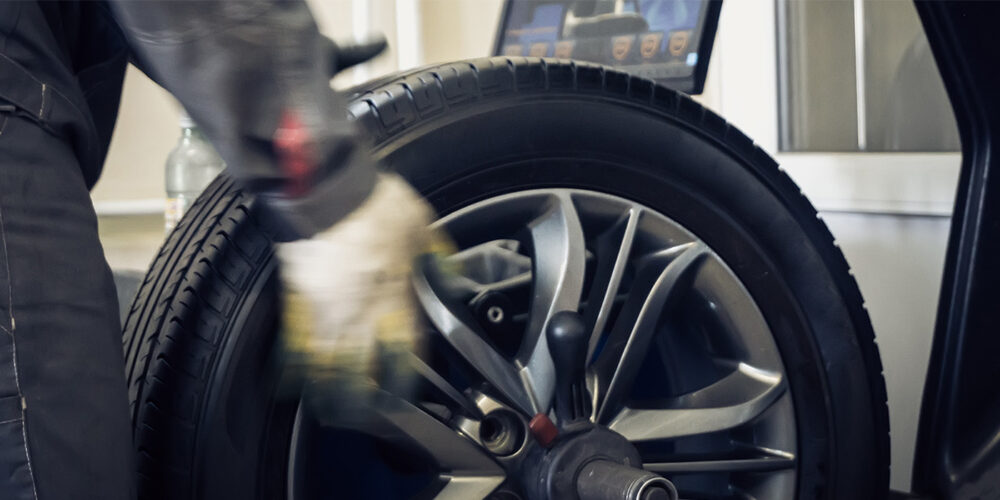 Adapted from Karl Kirschenman’s article in BodyShop Business.
Adapted from Karl Kirschenman’s article in BodyShop Business.
The questions that surround your air delivery system can be numerous. I caution you to think about exactly what you want to accomplish in your shop in the next 10 years before deciding on a product to replace your current air compressor system. For instance, if you own a body shop and anticipate going low-VOC or waterborne anytime soon and are considering air circulators that are operated by your compressed air system, you’ll want to make sure to plan for that scenario right now.
As shop owners and managers, we can be a bit lazy when we look to replace our existing equipment. Heck, I don’t blame you for wanting to pick up the phone to call the same company that made the air compressor that lasted for more than 30 years. However, you could be doing your entire shop a disservice by purchasing the same technology again. So let’s talk about what we can do with a limited amount of effort to examine our shops’ real air delivery needs.
Quality manufacturer representatives will conduct an audit of your existing air compressor – its duty cycles, energy usage, pump-up tests, etc., to help you determine the real cost of your current system. The real cost of your old versus new air compressor is not just the purchase price, but is a calculation of the total cost of ownership. This includes energy usage, maintenance, replacement parts, etc. However, don’t count out the fact that redos should be a part of this equation, especially when considering paint work. The compressed air filtration before the spray gun could make the difference.
The audit should last a minimum of a week, however, I recommend that you get an entire month’s worth of data under your belt during a typical production month. Don’t schedule the audit for your slowest month because you won’t get the readings you need to make a proper decision and you’ll end up under-specifying your equipment needs.
Determine the amount of cubic feet per minute (cfm) and the amount of pressure per square inch (psi) you’ll need to operate your facility properly. This is important because oversizing your air supply can cost you on your electric bill. After you conduct your air audit, you should have a good idea of your shop’s capacity needs.
Besides determining the pressure and volume needs of your facility, you need to look at the actual air delivery infrastructure within your shop. Does your shop have adequate pipe sizing and the correct type of pipe? Also, is the piping free of contaminants? Is your current piping free from leaks? Leaks also cause unnecessary compressor usage and cost. Black iron and PVC are not recommended for compressed air delivery, but I bet more than a few of us still have these pipes in our facilities. An aluminum airline system can be a great alternative considering their modular, full flow and non-corrosive design. Install enough air storage to prevent your shop from draining your air system when you kick in those new air circulators that you purchased for your spraybooth. Storage could be in the form of a tank, but also remember that when considering your piping system; larger diameter piping installed as a loop system, can act as a storage system and greatly increase compressed air availability. The last thing you want to do is flood your dryers with humid air because you’ve liquidated your air storage and your compressor is struggling to keep up with the demand.
Designing Your Air Delivery System
When reviewing, designing and considering your air delivery system, you need to remember the following: Your air delivery system must have enough clean, dry and stable air pressure to meet your maximum needs.
We know that’s easier said than done in a repair facility. By nature, we have a ton of particulates floating through the air all the time in our shops. Make sure that you and your manufacturer include more than adequate filtration systems – air intake filters, dryers, oil separators, particulate filters, coalescing filters, etc., depending on the air compressor technology you choose. You must also consider the use of the compressed air when considering filter quality. A filter that is adequate for common air tools will likely not be the quality needed for a spray gun or supplied air breathing system in your spray booth. If the air is being used in a painting environment, you must ensure that the air is free from all contamination: rust, oil droplets/vapors, water droplets/vapors, silicone and fractured desiccant media. The volume that a filter can handle is also important, again taking into account how much cfm you require. There may be cost justification in filter maintenance when considering one or two high volume filter units versus multiple low CFM units.
Location, Location
Another overlooked item is the air compressor’s location in the shop. Moving the air compressor outside will remove the noise from the facility, but could be hard on the air compressor and reduce its service life. Allow enough space so that the system can be easily accessed for servicing. A clean environment is recommended for the air compressor to reduce the amount of external debris that may buildup on the air compressor equipment. This debris can raise the operating temperature of the equipment and reduce its cooling efficiency. Don’t forget to account for proper ventilation of the area to remove excess heat appropriately. Also be sure to consider the proper ventilation if using supplied air breathing equipment, as you may need to supply the compressor with fresh, uncontaminated air.
In the wintertime, that heat can also be reintroduced into your shop to help offset cooling costs.
Contributors to this article include Michael Camber – marketing services manager, Kaeser Compressors; Matt Smith – national sales director, FS Curtis; Bill Kennedy – sales and products manager, Mattei Compressors; Andrew Penrod – product marketing manager, Atlas Copco Compressors, LLC; Brad Gravenhof – DanAm Air Specialist, Dan-Am Company
Karl Kirschenman is the president for K2 Consulting Group and holds a bachelor of science degree in communications with over 10 years of experience in the collision industry. He has previously worked as the collision program manager for ALLDATA and the director of technology for I-CAR.













